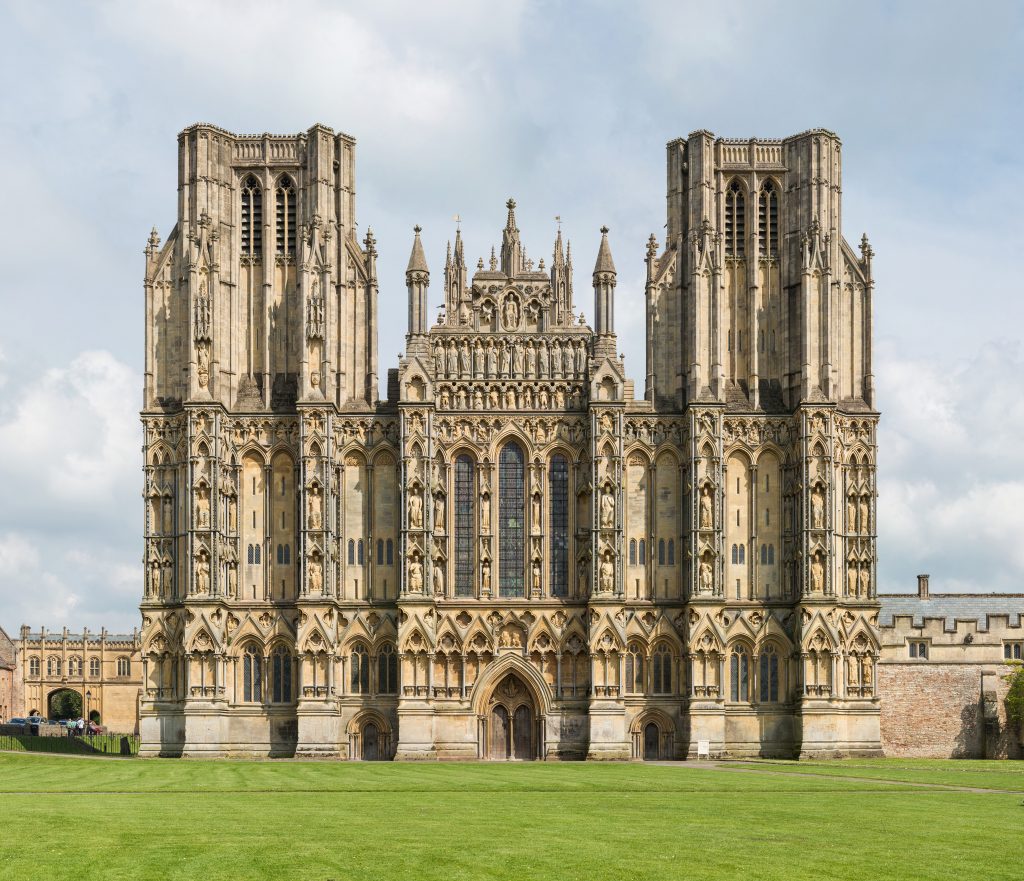
The facade of Wells Cathedral, located in Wells, Somerset, England, is a remarkable example of medieval architecture and holds significant iconographic meaning. Completed around the 13th century, the facade incorporates intricate sculptural details and symbolism, reflecting the theological and narrative themes of Christianity. Here are some key elements of the iconography found on the facade:
- The West Front: The main entrance to Wells Cathedral is marked by a grandiose structure known as the West Front. It consists of three tiers, each featuring different sculptural elements.
- Statues and Figures: The West Front is adorned with numerous statues and figures, primarily placed within niches. These sculptures depict biblical figures, saints, angels, and various symbolic representations.
- The Christ in Majesty: At the central pinnacle of the West Front, there is a sculpture of Christ in Majesty. This iconic representation depicts Jesus seated on a throne, often accompanied by symbols of the Evangelists (Matthew, Mark, Luke, and John) in the form of their respective animals (angel, lion, ox, and eagle). This symbolizes Christ’s authority and his role as the divine ruler.
- Apostles and Prophets: Flanking the central Christ in Majesty sculpture, there are statues of the Twelve Apostles and various Old Testament prophets. These figures symbolize the foundations of Christianity and the continuity between the Old and New Testaments.
- The Last Judgment: The middle tier of the West Front features a large relief sculpture depicting the Last Judgment. This scene portrays the biblical narrative of the final judgment of souls by Christ, separating the saved from the damned.
- Scenes from the Bible: Various relief sculptures on the West Front portray scenes from the Bible, including the Creation, the Fall of Adam and Eve, the Nativity, the Crucifixion, and the Resurrection. These scenes communicate key theological teachings and serve as visual narratives for the illiterate medieval audience.
- Decorative Motifs: The facade also incorporates intricate decorative motifs, such as foliage, geometric patterns, and ornamental details. These elements contribute to the overall aesthetic appeal while also serving symbolic purposes, representing ideas such as abundance, order, and divine beauty.
The iconography of the Wells Cathedral facade reflects the medieval Christian worldview, emphasizing the authority of Christ, the importance of biblical narratives, and the promise of salvation and judgment. The sculptures and reliefs create a rich visual narrative, inviting viewers to engage with the theological themes and contemplate the teachings of the church. The facade serves as a powerful statement of faith, a testament to the artistic and spiritual aspirations of the time, and a significant example of the iconographic tradition in medieval architecture.
